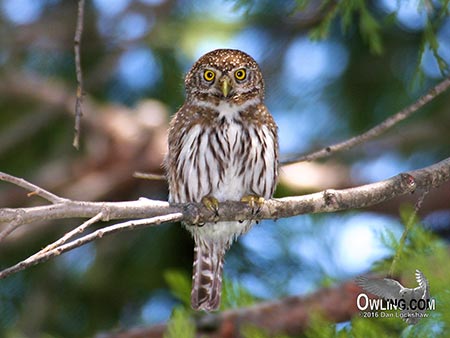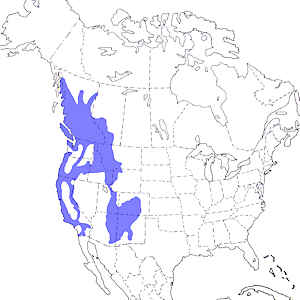
Northern Pygmy-Owl
A Reference for North and Central American Owls
Northern Pygmy-Owl, like all Pygmy-Owls, is a diurnal (active in the daytime) owl. It is small but a very bold and ferocious predator that will attack prey more than twice its size. This owl is considered to be of “least concern” by the IUCN/Birdlife although known declines are not well documented. The species faces dangers from logging, habitat loss, and a sheer lack of studies. This means that a clear understanding of its needs, population, and the threats it faces are just not well known. Here you will find photos, recordings and a brief field notes section to help identify and enjoy this beautiful owl.
A more in depth write up can be found in its natural history page.
To jump immediately to any of these sections use the Page Tabs below.
This is the primary advertising call of this owl. These evenly spaced hoots are the most common call heard in the field.
The Pygmy’s ” trill” is also a primary call and is often followed by one or more of the single primary hoots.
There are no videos at this time. Please check back with us.
FIELD NOTES
Northern Pygmy-Owl – Glaucidium californicum
The Northern Pygmy-Owl is a diurnal owl, although mostly crepuscular (active at dawn and dusk). It is rarely seen and/or heard at night. This small owl is unlikely to be confused with any other owl, in North America, except in a very small region of southern Arizona where there could potentially be an overlap in range with the Mountain Pygmy-Owl during juvenile dispersals. The Mountain Pygmy-Owl has a double note toot-toot t00t-toot primary call that help to separate these small owls. If you are not very familiar with these species it may be difficult to see in the field but the Mountain Pygmy-Owl is also slightly smaller.
The Northern Pygmy-Owl is grayish brown with a white chest that has bold dark brown streaking; it has a long narrow tail that is crossed with white bars and buffy white spotting on the forehead, sides and back. There are two black patches on its nape that vaguely resemble a pair of extra eyes; it has a pale grayish yellow bill and bright yellow iris (eyes). This owl lacks ear tufts although they may create a similar impression by compressing their facial disk and erecting their head feathers. Often seen as the lead bird in a cloud of screaming (mobbing) song birds. Length is 6 3/4″ (slightly smaller than a White-crowned Sparrow) and the sexes are alike although the female is heavier and has longer wings.

